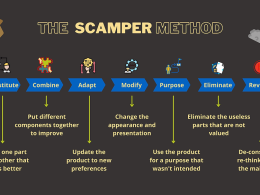Table of Contents Show
A feasibility study is an evaluation that helps determine if a proposed business idea or project is viable and worth pursuing. It involves gathering information about the potential costs, benefits, and other factors related to the concept in order to make an informed decision before moving forward.
Conducting a thorough feasibility study is crucial for entrepreneurs and organizations considering new business ventures or projects. It helps minimize risks and increases the chances of long-term success.
Why Conduct a Feasibility Study?
There are several key reasons why completing a feasibility study is so important:
- It validates the business idea and concept before significant investments are made.
- It identifies potential roadblocks or showstoppers that could derail the project.
- It provides vital information about the target market, projected revenues, costs, resource needs, and other factors.
- It objectively assesses the viability and profitability of the proposed venture.
- It determines if the concept aligns with the overall business plan and goals.
- It compares alternative approaches or solutions.
- It gives stakeholders confidence in pursuing the project.
In short, a feasibility study is a risk management tool. It can save time, money, and effort by avoiding mistakes before they happen.
Components of a Feasibility Study
Conducting a feasibility study involves researching and evaluating several key areas related to the proposed project. The major components include:
Market Research
Market research aims to determine if there is sufficient demand for the product or service and if the target market is large enough to support the venture. This involves understanding customer demographics, behaviors, needs, and analyzing the competitive landscape.
Operational Feasibility
Operational feasibility evaluates if the company has the resources and capabilities needed to deliver the product or service. This includes factors such as staffing, technology requirements, facilities, equipment, supply chain logistics, and more.
Financial Feasibility
The financial feasibility assessment projects costs and revenues to estimate profitability and return on investment. This looks at start-up costs, operating expenses, projected sales and revenue, financing options, and other monetary considerations.
Technical Feasibility
Technical feasibility evaluates if the company has the technical knowledge, resources, and capacity to develop the product or service according to specifications and maintain it long-term.
Legal Feasibility
The legal feasibility review looks at potential regulatory requirements, industry standards, permits, licensing, intellectual property considerations, and other legal aspects that could impact operations.
Conducting a Feasibility Study
The process of creating a feasibility study involves several key steps:
Identify Objectives and Scope
First, clearly define the goals and objectives of the feasibility study. Determine the key issues that need evaluation. Outline the scope and set parameters. Getting alignment early on ensures the study stays focused.
Gather Information
Conduct in-depth research to gather data related to all facets of the proposed project – market analytics, competitive intelligence, cost projections, technical specifications, legal requirements, and more. Use surveys, focus groups, and interviews as needed.
Analyze and Evaluate Options
With data compiled, perform analyses to evaluate each component of the project. Weigh pros and cons of different approaches. Conduct risk assessments. Compare cost-benefit trade-offs. Determine key success factors.
Make Recommendations
With thorough evaluation of all evidence, detail recommendations supported by the feasibility study findings. Provide guidance on how best to move forward. Offer alternative strategies as needed.
Create Report
Document the feasibility study methods, findings, analyses, and recommendations in a comprehensive report. An executive summary outlines key information. Back up assessments with charts, graphs, and tables.
Key Factors to Evaluate
Some important areas to focus on when conducting a feasibility study include:
- Industry Analysis – Research the overall industry, growth potential, trends, and market changes on the horizon.
- Target Market – Define target demographics and optimal customer segments. Analyze if the market is large enough to support the venture.
- Competition – Identify competitive offerings, pricing, advantages, and strategies. Find potential gaps or opportunities.
- Regulations – Review legal and regulatory factors that could impact operations and costs.
- Technology – Determine if current technology and systems can support the project. Assess if new solutions are needed.
- Resource Needs – Evaluate operational resource requirements at all stages.
- Costs and Funding – Estimate costs. Project cash flow needs. Identify funding sources.
- Sales and Profit Potential – Conservatively forecast sales and revenue projections.
- Risk Mitigation – Identify major risks and create contingency plans to address issues.
Creating the Feasibility Study Report
The feasibility study report should provide detailed documentation of the research process, key findings, analyses, and recommendations.
Executive Summary
Highlight key points and overall recommendation on whether to move forward or not.
Background
Explain why the feasibility study was conducted and goals.
Scope and Parameters
Outline the scope, research methods, data sources, period of study, and other details on approach.
Findings
Present findings from each feasibility assessment area (market, operational, technical, financial, etc.). Use data, charts, and graphs to illustrate research.
Analysis
Provide analysis and evaluation for each component. Weigh pros and cons. Assess risks and success factors.
Recommendations
Offer evidence-based recommendations on how to proceed based on overall findings. Provide alternative strategies as warranted.
Conclusion
Summarize key information and restate final recommendation.
Using Feasibility Study Results
The feasibility study provides objective guidance on whether the proposed project warrants moving forward or should be abandoned. It also offers insights to help refine and improve the concept to enhance viability.
If the study shows the project is feasible, next steps may include:
- Business Planning – Develop a comprehensive business plan and model.
- Funding – Present findings to secure financing from investors or lenders.
- Resource Allocation – Bring on staff, allocate budget, acquire equipment as needed.
- Project Planning – Create detailed project plans, schedules, budgets.
If deemed not currently feasible, next steps could involve:
- Concept Refinement – Tweak the concept to address issues uncovered.
- Research Expansion – Conduct further research to resolve uncertainties.
- Cost Reduction – Find ways to lower costs to improve financial viability.
- New Analysis – Complete a new feasibility study in future with updated data.
Feasibility Study Mistakes to Avoid
Conducting a flawed feasibility study can sabotage a project before it gets started. Be sure to avoid these common mistakes:
- Not defining goals and scope upfront
- Failing to gather comprehensive data from unbiased sources
- Focusing only on evidence that supports predetermined decision
- Limiting research to just one or two areas, not the full scope
- Not involving key stakeholders and experts in the assessments
- Letting opinions and emotions override facts and data
- Rushing through analysis and drawing conclusions prematurely
- Presenting findings in disorganized or confusing manner
- Ignoring or failing to plan for identified risks
- Not tying recommendations directly to research evidence
Frequently Asked Questions
How much time does a feasibility study take?
The time required depends on the project complexity, amount of research needed, availability of data, and other variables. Many take 1-3 months but larger projects could take 6 months or longer. Time should be allotted to gather quality information.
When should you conduct a feasibility study?
The ideal stage is once an initial business idea or project concept has been developed, but before significant time, money or resources have been invested. This provides an objective view before moving too far forward while also allowing flexibility to still modify plans as needed.
What are the benefits of a feasibility study?
Top benefits are reducing risks, validating concepts before investments are made, revealing potential issues early when they can still be addressed, and analyzing whether the project aligns with the company’s strategic goals and plans.
Conclusion
Conducting a comprehensive, accurate feasibility study is a crucial step for proposed new business ventures and projects. While requiring an investment of time and effort upfront, it can prevent costly mistakes from being made by highlighting weaknesses in the concept or plan early when changes can still be made. It also provides assurance and confidence for moving forward with only the most viable, low-risk opportunities. With so much on the line when launching a new endeavor, completing a feasibility study first is strongly advised to set up the best chance for long-term success.
Here are the 5 external links:







